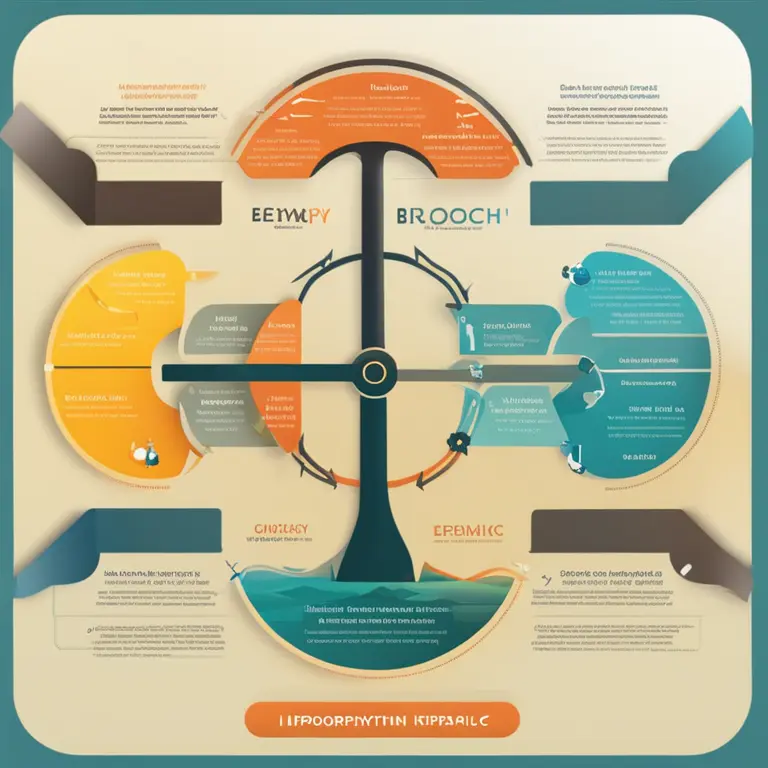
Mastering Biorhythm Charts: A Full Guide
Discover the fundamentals of biorhythms, their cycles, and how to interpret them to gain insights into your physical, emotional, and intellectual rhythms.
article by Adrian Wallace
Introduction to Biorhythms
Biorhythms are believed to be natural cycles that dictate the ups and downs of various aspects of our lives. The concept dates back to the 19th century but continues to intrigue many in the modern era of wellness and self-awareness. This guide will provide clarity into reading and interpreting your biorhythms, shedding light on your physical, emotional, and intellectual states. First and foremost, it is important to understand what biorhythms are. They stem from the idea that our lives are influenced by rhythmic biological cycles, and by tracking these, we can anticipate periods of strength or vulnerability.

The Biorhythm Cycles
Biorhythms are split into three main cycles — physical, emotional, and intellectual — each with its own time span. The physical cycle lasts 23 days and governs your vitality and health. The emotional cycle, with a duration of 28 days, influences your mood and feelings. Lastly, the intellectual cycle spans 33 days affecting cognitive functions and decision-making. To read biorhythms effectively, one must consider the interplay between these cycles, as they are thought to impact our daily lives significantly.

Calculating Your Biorhythms
To calculate your biorhythms, you'll need your date of birth and the date for which you want to know your biorhythmic state. Various online calculators and apps available in 2024 make this process easy. Once you input your details, the calculator will present your personal biorhythmic chart. Your biorhythms from the day you were born are depicted in a wave-like graphical representation showing the flow of your different cycles.

Interpreting the Biorhythm Chart
Reading a biorhythm chart involves understanding the sine wave-like patterns depicted. When a cycle crosses the midline and moves upwards, it indicates a positive, or high-phase, suggesting days where you might feel more energetic or intellectual, based on the cycle. Conversely, a downward crossing signifies entering a negative, or low-phase, implying potential downtimes or challenges. Days when a cycle crosses the midline are considered critical, as they might entail a transition phase provoking instability or caution.
Integrating Biorhythms into Daily Life
Once you get a hold of reading your biorhythm chart, you can apply this understanding to plan and predict the optimal times for certain activities. For example, schedule demanding physical tasks or workouts during high-phases of your physical cycle. Understanding emotional cycles can aid in managing relationships, and intellectual high-phases might be the best times to learn something new or solve complex problems. Biorhythms aren't scientifically proven, but many find them useful as a personal guide.
Limitations and Considerations
While fascinating, it's important to remember that biorhythms are not scientifically backed and should be used with a critical mind. Any decisions made based on biorhythms should be with a grain of salt and not override medical or psychological advice. Biorhythms can be a fun self-reflection tool, and many people enjoy using them alongside other personal development methods, such as astrology or meditation.
Published: 1/25/2024
Modified: 1/25/2024
More predictions
Come back here soon to learn more about yourself and your future


The Principles of Biorhythm Cycles
Discover the fundamental principles of biorhythm cycles and how they influence daily life and personal well-being in this insightful article.


The Intersection of Biorhythms & Astrology Explored
Discover the link between biorhythms and astrology to gain insights into your life's patterns and potential.


The Biorhythm Debate: Effective Insight or Myth?
Discover the realities behind biorhythms, how they're calculated, and their impact on daily life. Can these biological cycles truly predict our physical, emotional, and intellectual states?